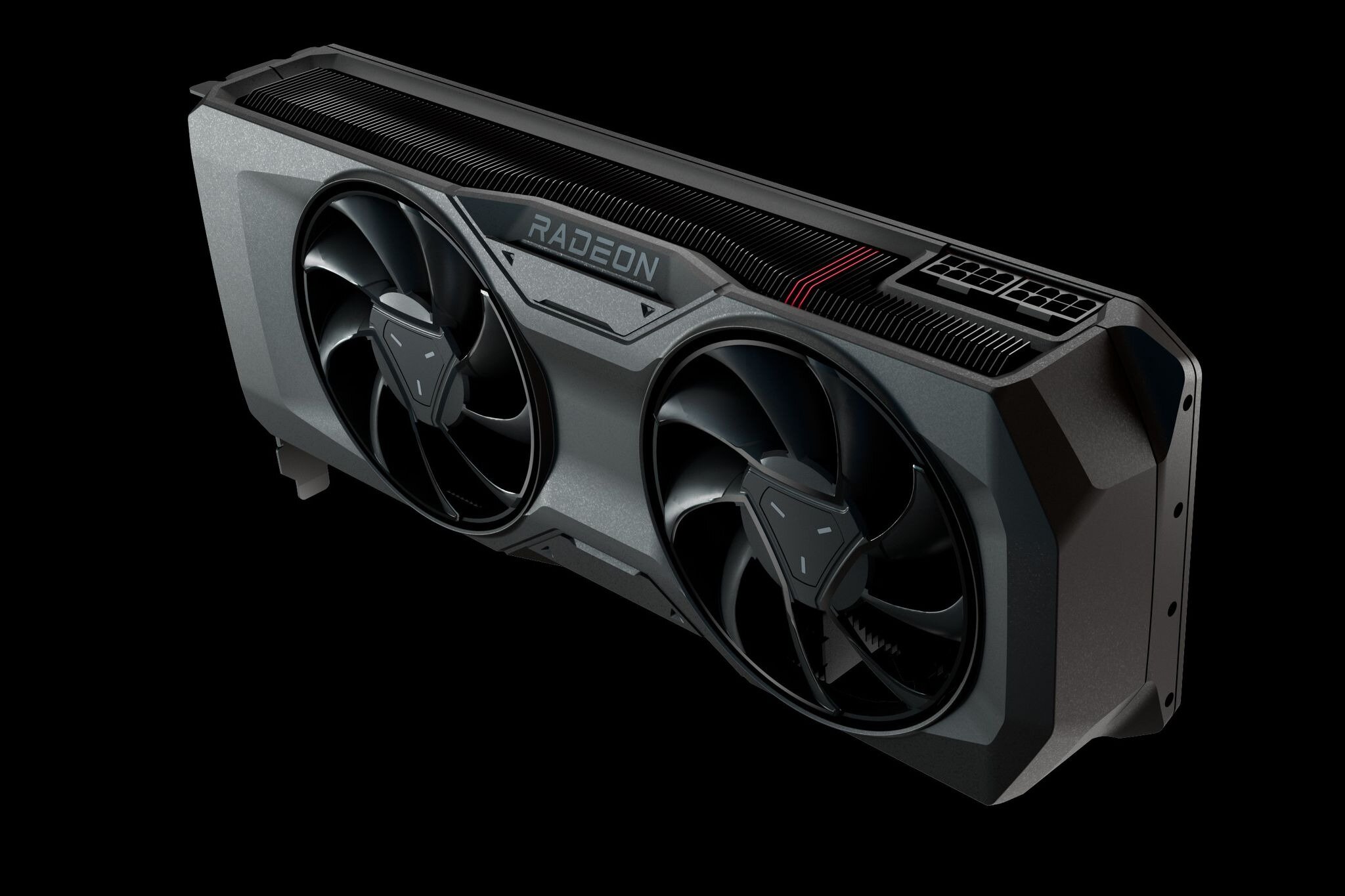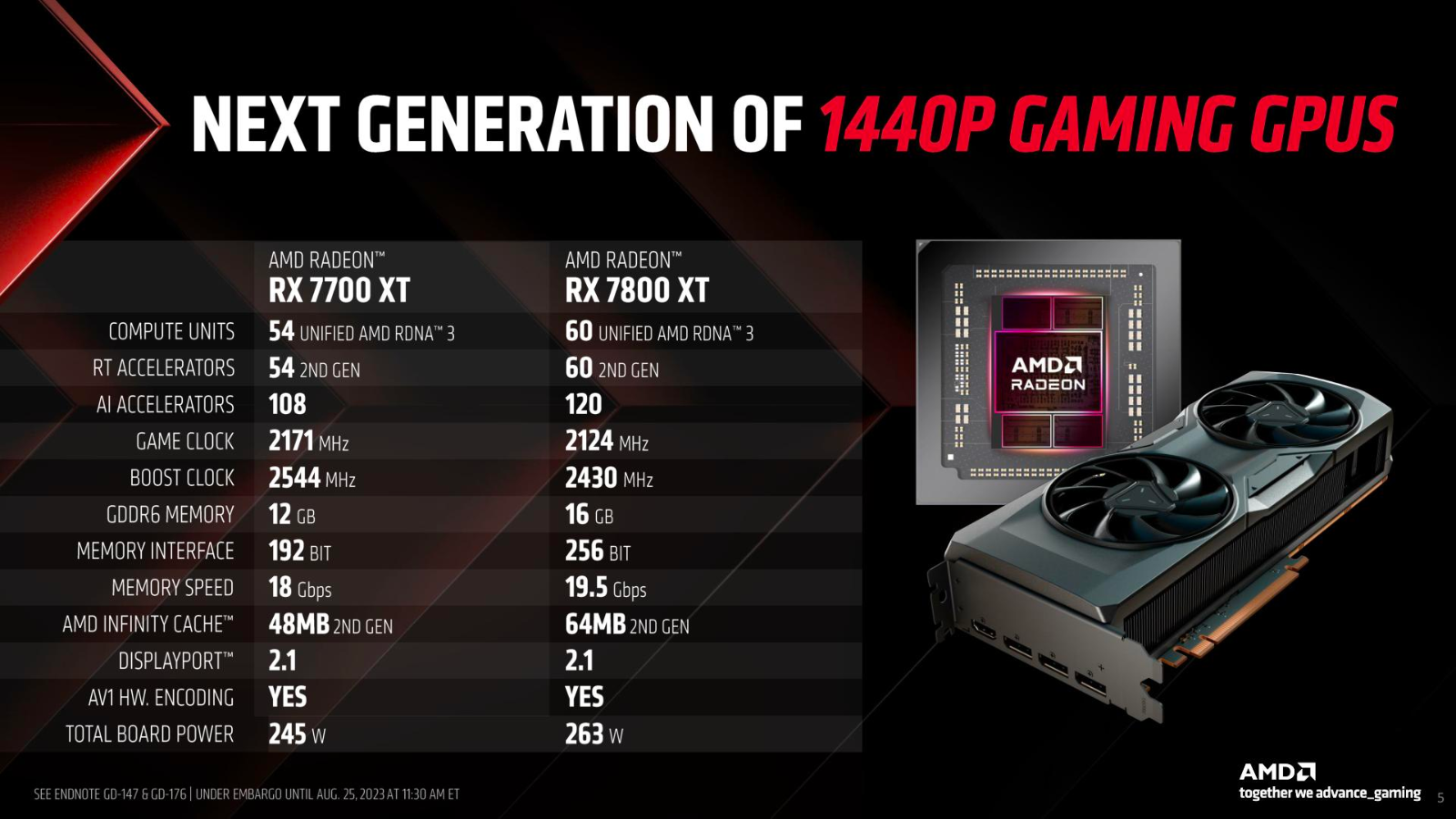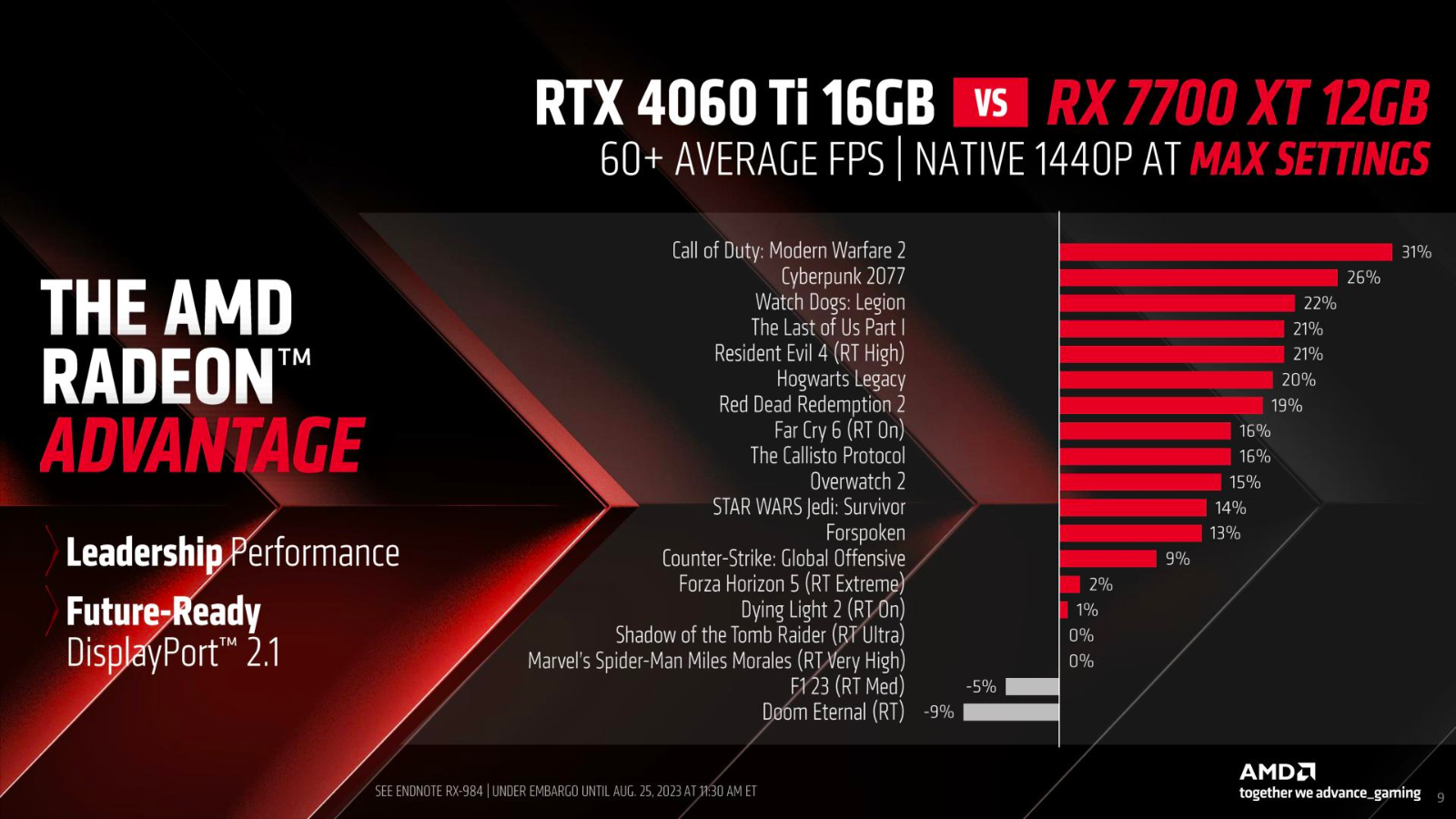
to this showAMD is focusing on a new GPU called Navi 32. Although it has been introduced before, this marks its first appearance in the gaming series. The Navi 32 GPU features up to 60 compute units and a 256-bit memory bus, plus 64MB of Infinity Cache.
The RX 7800 XT is the flagship model in the series, featuring 60 CUs, 128 AI accelerators and 16GB of 19.5Gbps GDDR6 memory on a 256-bit bus. Therefore, the card will offer fewer cores than the last generation RX 6800 XT (72 CUs). The GPU has a clock speed of up to 2430MHz, with a power consumption of up to 263W.

As for the RX 7700 XT, it is interesting to note that its specifications have exceeded expectations so far. Specifically, it uses 54 CUs and 108 AI accelerators, which is a significant improvement over the previous generation RX 6700 XT which had 40 CUs. It still has 12GB of GDDR6 RAM on a 192-bit bus, although the memory clock is slightly lower at 18Gbps. Notably, the RX 7700 XT shows a higher TBP compared to the RX 6700 XT, with an increase of 15W to 245W.
In terms of performance, AMD claims that the RX 7800 XT will on average outperform the GeForce RTX 4070 by 3.5% in games at 1440p at maximum settings. Some titles show 5% to 23% greater performance, though some games that use ray tracing prefer the RTX 4070. At the same selection of titles and graphics settings, the RX 7700 XT is said to be 12% faster on average. Compared to GeForce RTX 4060 Ti 16GB.

AMD confirms that unlike the 7800XT, there will be no “reference model” for the RX 7700 XT, though a rendering is available for marketing purposes. The RX 7800 XT will only be released with the new dual intercooler while the RX 7700 XT will be available exclusively through AIB partners. Additionally, AMD confirms that both the RX 7800 XT and RX 7700 XT will support DisplayPort 2.1.
The AMD RX 7800 XT will be launched in Europe at a price of €549 while the RX 7700 XT will cost €489. Both cards will be available in the market on the 6th of September.
In addition to the cards themselves, AMD will also release FSR 3 on September 6th. The latest version of the upgrade technology adds frame generation, which uses machine learning to “imagine” a new frame between existing frames, like a more advanced version of the anti-aliasing function that many TVs support. Nvidia added a similar feature in DLSS 3.0 while AMD calls it “Fluid Motion Frames”. FSR 3 also includes “Native Anti-Aliasing”, a new optional feature that uses FSR technologies to prevent anti-aliasing and improve graphics instead of upscaling from a lower resolution.
-
7

“Avid problem solver. Extreme social media junkie. Beer buff. Coffee guru. Internet geek. Travel ninja.”






More Stories
In Greece Porsche 911 50th Anniversary – How much does it cost?
PS Plus: With a free Harry Potter game, the new season begins on the service
Sony set to unveil PS5 Pro before holiday season – Playstation